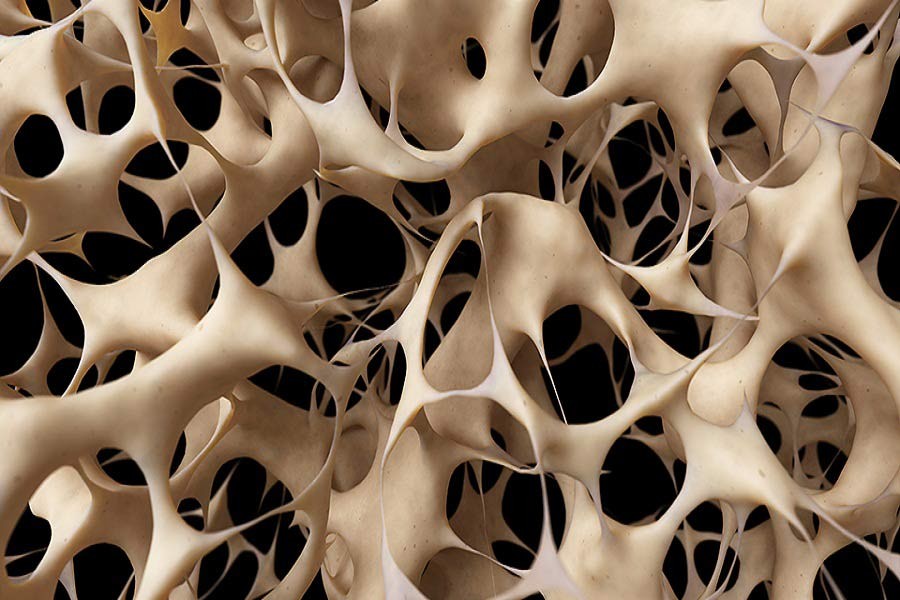Like any other living tissue, bones decay with age. Sometimes it may happen pathologically due to diseases or medications. Whatever the reason is, a decaying bone is weak and prone to fracture. This condition is called osteoporosis.
Osteoporosis is a type of bone degradation where the mass and strength are gradually declining. It usually goes on for years without any symptoms, then suddenly the patient falls, a fracture is detected and voila, the doctor diagnoses osteoporosis.
Common sites of these fractures include the wrist and the spine of the hip.
It has been identified that over 50 years, one in two women and one in four men will have an osteoporosis-related fracture in their lifetimes. It is more likely to happen earlier if there is a deficiency in dietary calcium, and/or if there are problems with vitamin D production in the body.
Certain things can point out the possibility of osteoporosis early. Due to the decay, people may get shorter by an inch or more, or there is a change in posture as they stoop or bent forward. Sometimes they experience lower back pain. And of course, a fracture is often the telltale sign.
One of the commonest risk factors for osteoporosis is an immediate family member with the condition. Low body weight, smoking, alcohol drinking, early menopause in females, and certain medications (e.g., anti-seizure medications, hormonal treatment for some cancers) all contribute to the risk.
Suffering from diseases, e.g., thyroid issues, inflammatory bowel disease, multiple myeloma or other blood diseases all add to the risk.
A bone mineral density test is often employed to recognise the condition. The US Preventive Services Task Force recommends this for all women over 65, and for high-risk women under 65.
But it must be remembered that while the risk of osteoporosis is more in females, males are not free from it. So, the best thing to do is consult the doctor and get checked up as suggested by the experts.
To minimise the risk of bone decay and fracture, certain lifestyle modifications can be made. One approach is to include calcium and vitamin D-rich foods in the diet. Dairy products, salmon, spinach, and broccoli - all can be good sources of calcium. Fortified dairy products, tuna, liver, and egg yolks provide vitamin D.
It is true that we can get sufficient vitamin D from exposure to sunlight. But this mechanism slows down in the elderly, so they may need additional sources. Postmenopausal women, for example, will need at least 400 IU to 600 IU of vitamin D and about 1,200 milligrammes of calcium daily to maintain good bone health.
Weight-bearing exercise is also recommended. Dr Kathryn Diemer, MD of Washington University School of Medicine advises 30 minutes of weight-bearing exercise five days a week.
We don’t need to do anything fancy, just make walking a daily habit. Hiking, cycling, tennis, dancing are good too. Swimming, however, will not serve this purpose.
If you have osteoporosis already, anything that twists the spine can be harmful. So it is necessary to talk to an expert to determine the right exercise regimen.


